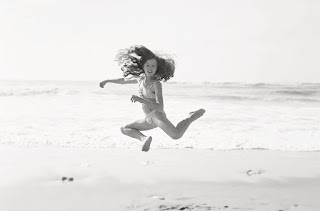Teaching Ballet Online
Amid
stay at home orders and social distancing, what are dance teachers to do? Is teaching dance online a possibility? Some
schools and teachers have been attracted to online teaching for obvious
financial reasons and we must respect their motivations. But, can an activity both
physical and artistic be taught through video recorded demonstrations and
self-corrections only?
There
has been an outpour of online classes and videos since the Covid-19 outbreak. Some
of these classes are interesting and deserve to be shared with our students,
while others will hopefully quickly dissolve into the webosphere and if the
purpose of publishing an online video is truly to teach dance, then perhaps we
should first think about – how we learn to dance.
Dance
teachers are in the trade of forming correct muscle memories, a lengthy and
repetitious process that must be completed correctly. The key word in this last
sentence is “correctly”. The margin for
error when working muscle memory is thin and bad habits are difficult to
correct. So, can we teach safely, honestly
and effectively, if we are not in the studio with our students? In my opinion
these issues cannot be ignored by the teacher who decides to teach online classes
and before turning on the camera, it is necessary to define what the objective for
the on line class is. If we do not want to waste our time, we must also
remember that the attention span of the online viewer is limited. Indeed, most
of us are not trained film makers and we will have to captivate our audience
with a content that is both clear and concise. Trying to teach too much online
would be a mistake and perhaps even a dangerous one, for that could be the
source of bad habits formation which could also lead to injuries.
In
order to teach safely and successfully, I
have come to realize that focusing on specific aspects of technique, analyzing
and demonstrating possibly from various angles are a necessity. A video is a two
dimensional medium therefore it is important to deconstruct the movement with
clear oral instructions to compensate for the loss of clarity that is
inevitable when you transform three-dimensional visual information into a flat
screen image. Paradoxically, teaching online forces the instructor to use a
more analytical and somewhat less visual approach to teaching, which is
actually very helpful and prevents students from merely “mimicking” without
truly decomposing and understanding a movement. As a general rule floor
exercises work very well for the beginners, while barre exercises should be
aimed at the more advanced students.
Teaching
on line classes is not a one size fits all. Unlike what happens in a dance
studio where each student gets individual attention at some point or another,
while watching a video a student gets no special attention at all and this is
why the videos we make must have a target audience in mind. Also, as we
teachers know, we must not hesitate to repeat ourselves. So, it is ok to state
the obvious when we record our instructions. If the viewers already know what we
are telling them, it will not hurt if they hear it again and if they have not
heard it yet, they will definitely need to hear it for a first time.
As
a teacher, this time of confinement has forced me to think about online classes
not so much as a replacement, but rather as a supplement to my teaching. With a
discipline like dance, online videos are likely to replace the soon to be
obsolete printed student’s manual. These online videos will not replace the
unique learning environment provided by a traditional ballet class taught in a
studio, however, making our own videos could be a continuation of what happens
in the studio and a way to offer our students the possibility to practice at
home between classes with the help of safe and sound instructions.
Obviously
not every dance teacher has the time, the equipment or the willingness to make
videos, so using videos made available by some reputable companies and schools are
also a solution to integrate online teaching to the work accomplished during
class. Major schools have online videos
that can be very useful to students too. As a dance instructor for a community
college located away from a large city and with little exposure to live
performances, I tell my students to use the internet to discover and
learn. Beyond the learning of technique,
the internet can also help them get exposed directly to what is happening away
from home. Watching the Vaganova, or the
Cecchetti method being taught by some of the most qualified instructors in the
field can certainly be of interest to our students.
The
internet is a wonderful tool that, I believe we must use in order to further
our students’ knowledge. Internet has its dangers, such as the time wasted
watching useless material with little educational or artistic value, but when
used wisely and with proper directions, it becomes a wonderful window onto a
vast field with a great perspective of what dance was through history and is
throughout the world today.


Sadly I found (and find) that students had online fatigue... its hard enough to keep them motivated to to attend classes on Zoom...any extra research I asked fell on deaf ears. Frustrating, as I find the internet a jewel box that I WISH I had access to as a student. But perhaps it is "I" that needs to look at my lesson plans and delivery - how can I better motivate the student to be curious? Or am I being too hard on myself during a unique period of time that is rewriting education, motivation and drive?
ReplyDelete